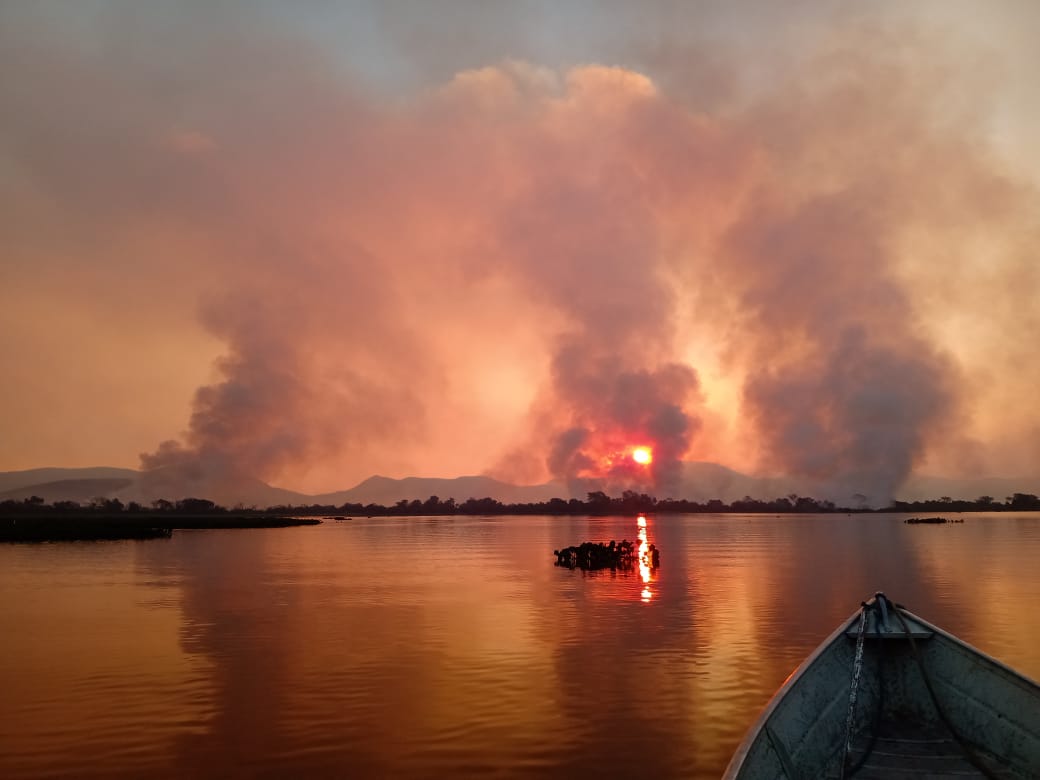::cck::692::/cck::
::introtext::
When you look at the news about wildfires in Pantanal, which has already burned 25% of the biome, you can have a have perception of that being the total impacted area nowdays. However, when researchers analyzed the deforested and burnt areas until October 2020, they found that the damage reaches at least 40% of Pantanal.
“The wildfires in Pantanal already passed 28% of its biome. Although, the impact isn’t only this. Today it’s estimated that more than 15% of the region was deforested. There are few overlapping spots between those areas. Considering these two impacts, the data shows that at least 40% of Pantanal is already compromised. This isn’t permanent, Pantanal shows it has a big ability to recover, which we call “resilience”. Although, as in 2020, vast areas were burned, probably the resilience will be smaller when compared to other years”, Rafael Chiaravalloti points out, professor of ESCAS – Escola Superior de Conservação Ambiental e Sustentabilidade (Superior College of Environmental Conservation and Sustainability), researcher of IPE – Instituto de Pesquisas Ecológicas (Institute of Ecological Researches) from Smithsonian Conservation Biology (USA) and scientific director of Ecoa – Ecologia e Ação (Ecology and Action).
According to him, the biome needs more time to recover. “It’s the same that happens if we imagine a neighborhood in which one house is destroyed, the neighbors can help recover it, but if many houses gets destroyed, the recovery will take way longer. At Pantanal what we have is the second scenario”.

* According to INPE, the Burned Area product with a 1km spatial resolution is in version 0.6 and is in the validation phase, at the Provisional maturity level.
The map above – with the deforested and burned areas – was developed by the project “Paisagens Sustentáveis” (Sustainable Landscapes) in the Pantanal, a partnership between the Smithsonian Conservation Biology Institute, Embrapa Pantanal and IPÊ. “With this map, made by Henrique Shirai who is also a master at ESCAS, who is part of the project team, we want to understand the impact of fires on these sustainable landscapes. We still consider the Pantanal as a biome that can combine conservation with production, but at the same time, the fires shows us that some measures needs to be replanned. The fires are not the end of the Pantanal, but they are certainly a red alert, especially when we analyze the integrated impacts of climate change, increased deforestation in the region surrounding the biome and the construction of hydroelectric plants in the region, which can certainly be a burden to the protection of the Pantanal ”.
The Sustainable Landscapes project in the Pantanal started this year with two main objectives. “Understand what sustainable landscapes in the Pantanal are and accelerate the certification process for sustainable farms; joining efforts with Embrapa Pantanal to expand the Sustainable Pantaneira Farm certification for the entire biome.
Certifications can mainly bring economic benefits to homeowners, such as credit facilities and tax breaks”, Chiaravalloti revealed. The team also includes researcher Dr. Walfrido Tomas from Embrapa Pantanal, Andre Restel Camilo, from Smithsonian, and Dr. Peter Leimgruber, also from Smithsonian. Rafael also points out that the approval of the Pantanal Law, can help reinforce the alliance between conservation and production, and could represent an important advance for the region. “.
The Article 10 of the New Forest Code highlights the Pantanal as a peculiar environment that needs specific regularization. With alignment between landowners and conservationists, we could celebrate with the Pantanal Law what many farmers have been doing for 150 years. Some farmers want what conservationists want – sustainable development, and we need to move towards that goal. ”.
About the drought in the Pantanal, the ESCAS professor highlights factors that aggravate the situation. “The current scenario is not an exclusive consequence of drought cycles, there are also the issues of PCHs – “Pequenas Centrais Hidrelétricas” (Small Hydroelectric Plants) that reduce the dynamics of flooding in the biome, in addition to deforestation and global warming that make the prospects even more complicated. Waterway projects also have the potential to reduce this flooding dynamic in the Pantanal”.
::/introtext::
::fulltext::::/fulltext::
::cck::692::/cck::


